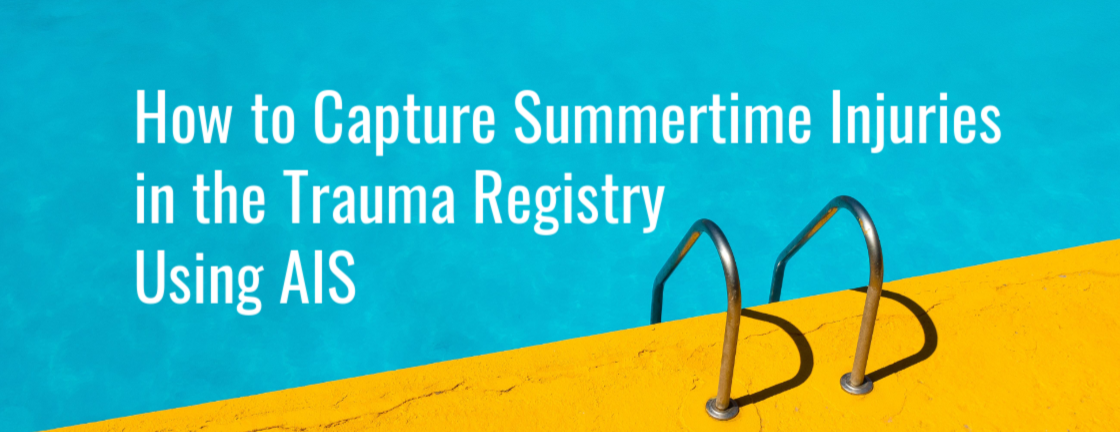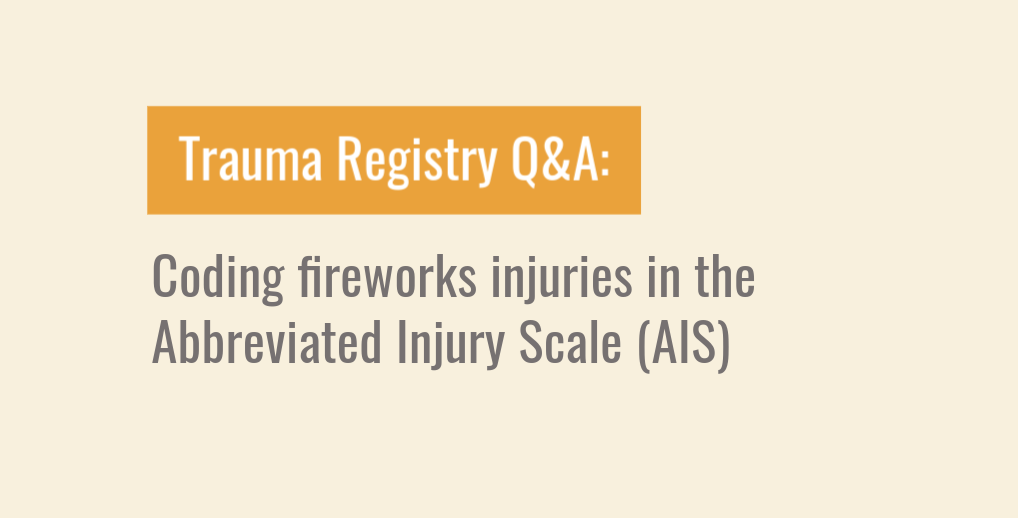Approximately 10,000 patients were treated for fireworks injuries in the U.S. in 2019, according to the U.S. Consumer Product Safety Commission (CPSC). Nearly three-quarters of these injuries occurred during a one-month period around the Fourth of July.
Trauma registrars will soon see an influx of charts for patients with fireworks trauma, so now is a good time to review the basics of coding these injuries in the Abbreviated Injury Scale (AIS).
Q. How do we code fireworks injuries in AIS?
The key point is that fireworks are the mechanism of injury, not the injury itself. Consequently, fireworks per se are not coded in AIS. Registrars use AIS to code the injuries resulting from the fireworks incident.
For example, a patient was holding a bottle rocket that exploded in his hand. The resulting injuries might include one or more fractures, open wounds and burns. Other potential injuries from fireworks events include lacerations, contusions, ruptures, torn tendons, degloving injuries, impalements and amputations.
As a reminder, AIS codes cover amputations that are part of the injury per se — not surgical amputations necessitated by an injury.
Q. What should we know about coding fireworks shrapnel injuries?
First, remember that shrapnel is a foreign body. A foreign body is a mechanism of injury, so in general it is not coded in AIS. You code the injury caused by the foreign body, but not the foreign body itself.

However, there is one exception: AIS does have a code for foreign bodies in the eye. According to the CPSC, approximately 15% of fireworks injuries involve the eyes. Trauma registrars should look for documentation of shrapnel or other foreign bodies in the eye when abstracting charts for fireworks injuries.
Second, consider that shrapnel injuries may qualify as “peppering” injuries of the skin. Peppering codes were introduced in the 2015 edition of the AIS Dictionary, and there are specific codes in almost every chapter. If your trauma center has adopted AIS 2015, know that peppering caused by fireworks shrapnel can be coded and captured in your trauma registry.
Kathy Cookman, BS, CSTR, CAISS, EMT-P, FMNP
AIS Business Director/International Technical Coordinator – AAAM
CEO – KJ Trauma Consulting, LLC
Amy Brammer, MSN, RN, TCRN, TNS, CEN, CAISS, CSTR
Trauma Program Director, Kaiser Permanente Vacaville Medical Center
Vice Chair of the Abbreviated Injury Scale Certification Board
Faculty for the Abbreviated Injury Scaling Course

